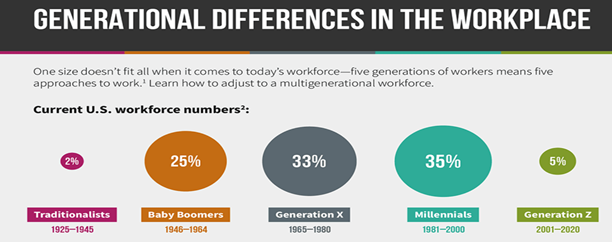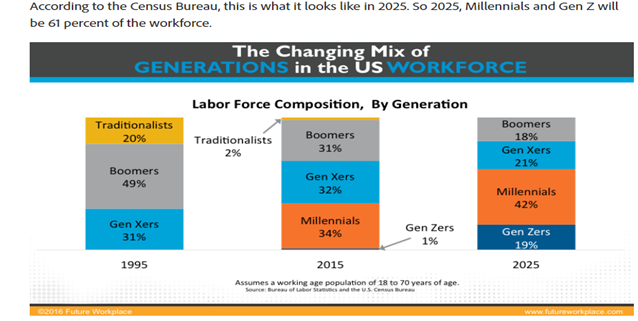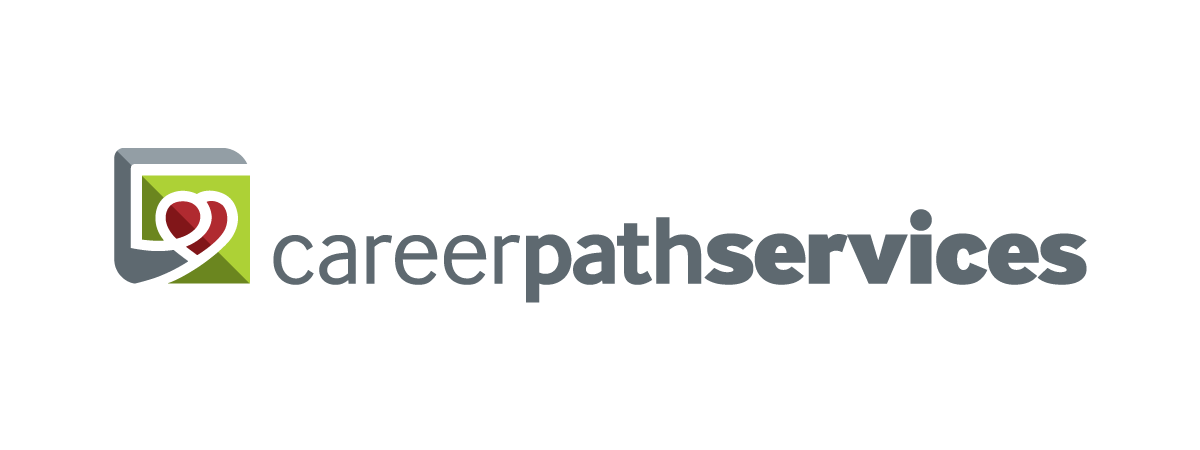THE FURIOUS FIVE: HOW ARE GENERATIONAL
DIFFERENCES AFFECTING YOU IN THE WORKPLACE
When you come to work each day, you may be greeted by a Millennial with a tattoo on her wrist and a diamond stud in her nose, while you report to a Baby Boomer in a designer suit who works excessively. The woman in the next office has white hair and age-spotted hands, while the man across the hall has teenage children. More and more people are working long past the “traditional” retirement age. At the same time, the youngest generations are entering the workforce for the first time. And let’s not forget everyone in between, informing what is called the Generational Gap within the workplace. For the first time in modern history, five generations are working side-by-side. In Workforce Development, the Generational Gap is the difference in behavior and outlook between
groups of people born at distinctly different times. Each generation grows up in a
different context and, as a result, may have different work expectations. For instance, Gen Zers are heavily tech-reliant and comfortable using social media platforms, while older generations may
prefer other forms of communication. Let’s take a deeper look:

Traditionalists
Since this generation was born between 1928 and 1945, we no longer see many of them in the workplace. However, they still impressively make up around three percent of the workforce. This is the generation who firmly believes in an “Honest day’s pay for an honest day’s work.” They’re extremely loyal and enjoy being respected for that. Since they’re conformists, they value most job titles and money.
Baby Boomers
Born between 1946 and 1964, this group is also referred to as the “Me” generation. They’re predominately in their 40s and 50s and are well established in their careers. Boomers are often ambitious, loyal, work-centric, and cynical. They prefer monetary rewards and enjoy nonmonetary rewards like flexible retirement planning and peer recognition.
Gen Z
This generation is right on the heels of Millennials, and they’re starting to enter the workplace. Even
more interesting, they make-up one-quarter of America’s population, making this generation
larger than baby boomers or Millennials. This generation is motivated by social rewards,
mentorship, and constant feedback. They also want to be doing meaningful work and be given
responsibility. Like their predecessors, they also demand flexible schedules. Believe it or not, 53
percent prefer face-to-face communication!

Understanding and respecting multi-generational needs isn’t just a matter of inclusion. It’s a business
imperative – 96% of American workers say it’s important to them to work for an organization that values workers of all ages. Accepting and respecting these value systems and preferences is critical to bringing out the best in us all, whether within a Supervisor to Employee relationship, Peer to Peer, or as a Career Coach to Job Seeker. Yes, Generational differences can also lead to conflict because of each generation’s different perspectives and work styles. A Traditionalist or Boomer who always works long hours may feel the “younger generation” isn’t committed to the job because Millennials often prefer to work hard, complete the task, and then get some downtime before leaping into the next step. To reduce conflict, each must learn to value the team’s accomplishments and focus on the goals rather than the work hours. More importantly, appreciating each other’s views and values will allow different
generations to increase their appreciation of one another. This, in turn, will lead to better communication and collaboration because people are now talking with a sense of appreciation and acknowledgment. When people feel heard, understood, and valued, they are more likely to invest time and energy into their projects and jobs, and they are more likely to stay at an organization. The truth is, we need people of all generations to make organizations effective. You want the “getting the job done” attitude of the Traditionalists, the teamwork skills of Baby Boomers, the self-reliance of X’ers, the multitasking abilities of Millennials, and the entrepreneurship of Generation Z. Combined, these qualities create a powerful workforce that can handle any challenge that comes its way. How are you fitting in and contributing?
Written by: Kayci Loftus

Comments are closed.